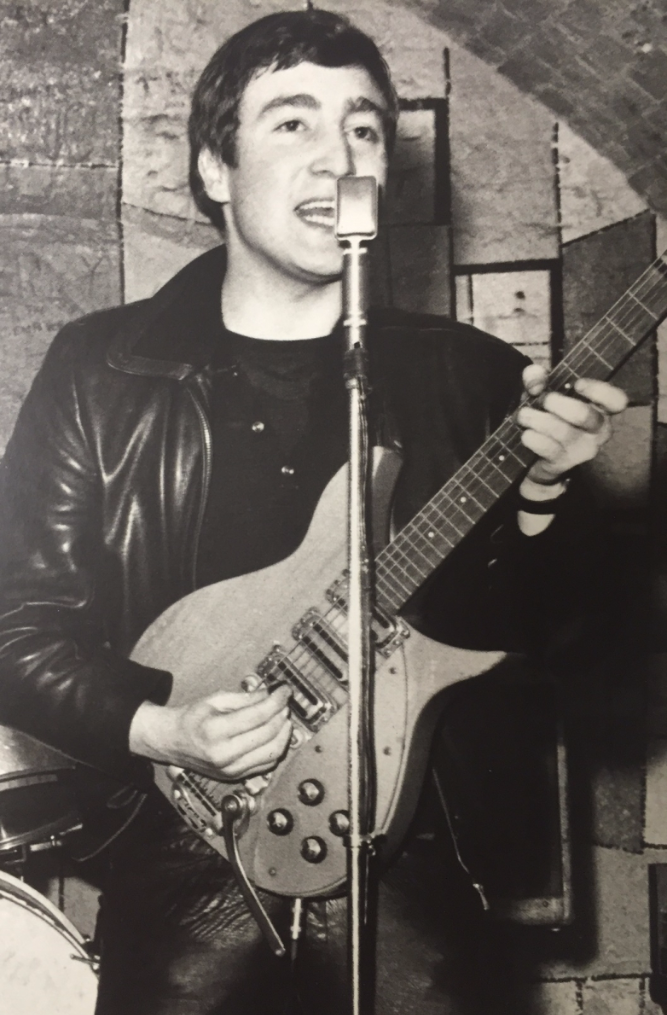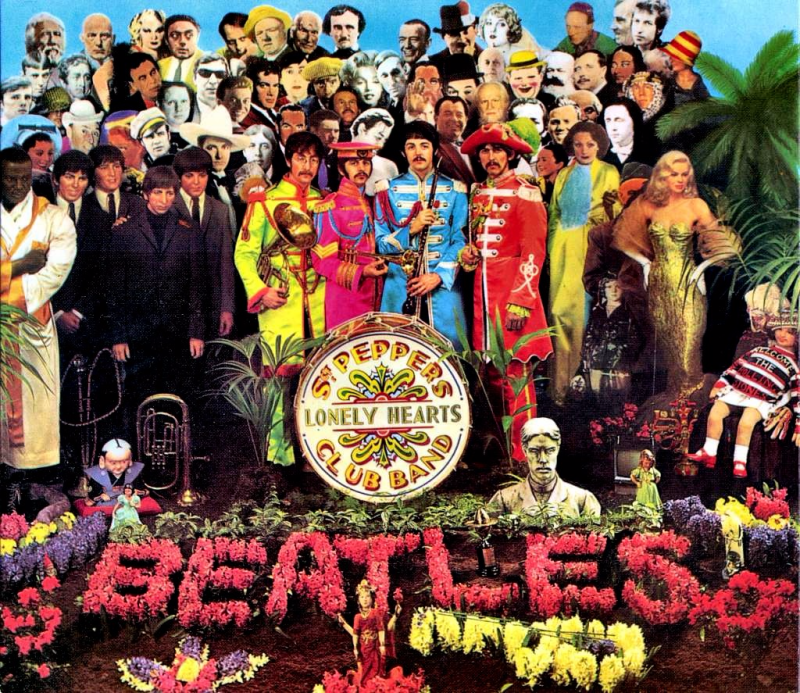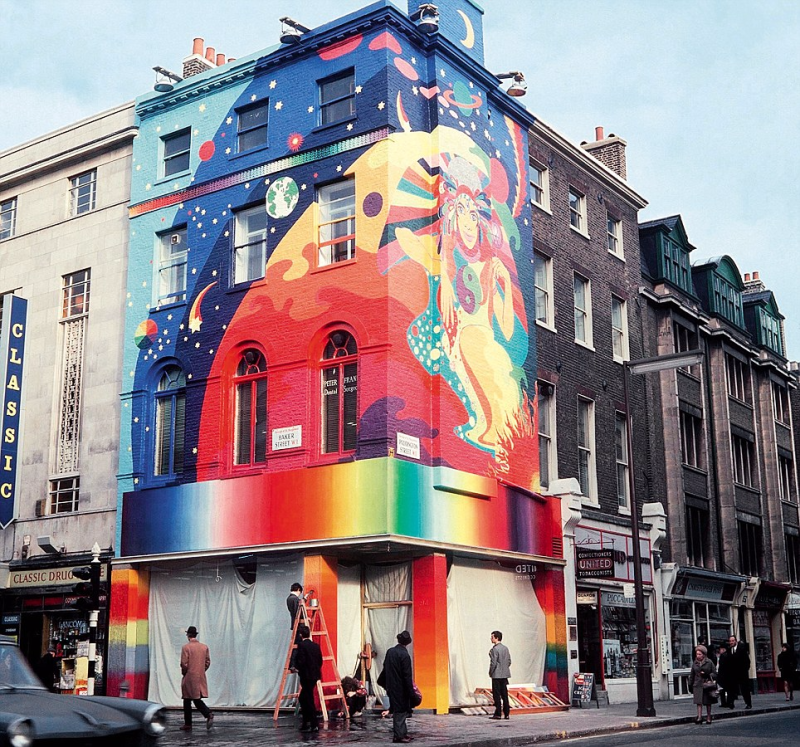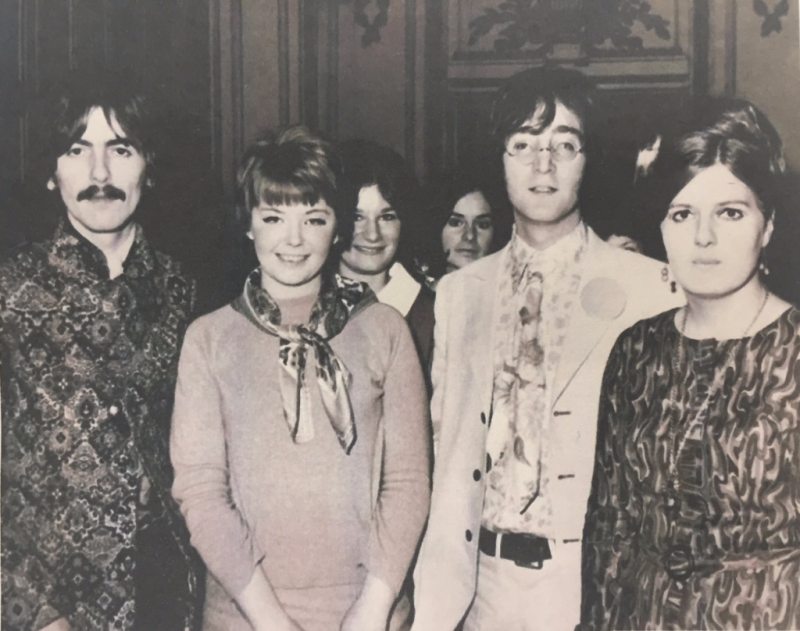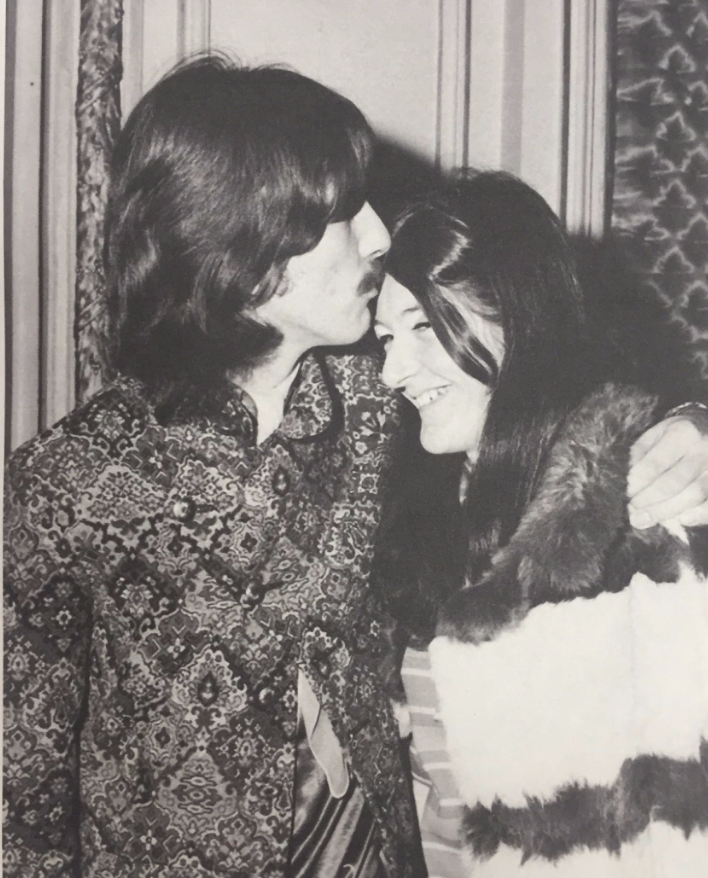Fashion and music have always had a strong connection – think of Prince in his purple suits, the Spice Girls sporting distinctive character costumes, even the titular David Bowie song “Fashion.” Arguably the world’s most recognizable band, The Beatles cunningly used fashion throughout their career to communicate their onstage personas. Their transformation from teddy boys to beatniks, mod rockers to spiritual hippies culminated in the 1967 launch of a Beatles-owned clothing boutique in London. The FIDM Museum recently acquired a man’s brocade suit from the Apple Boutique, and it is a perfect encapsulation of the Peacock Revolution in 1960s menswear, a movement that encouraged men to dress liberally and use clothing as a form of self-expression.
Before they were England’s mod-suited Fab Four, The Beatles were playing sessions in Liverpool’s cramped Cavern Club wearing jeans and leather jackets. Unlike the clean-cut image they presented when they toured America, the original Beatles look was actually quite scruffy.[1] It was their manager Brian Epstein who suggested the band wear matching tailored suits to project a cohesive image. Yet the men still managed to adapt the suits to their own unique style: their pants were tailored into narrow drainpipes, and they famously donned fashion-forward collarless suit jackets (perhaps inspired by Pierre Cardin) made by London tailor Dougie Millings.[2]
The next iteration of Beatles style was evident on the cover of their 1967 album Sgt Pepper’s Lonely Hearts Club Band. The men wore neon satin military jackets, long hair, and mustaches. The Beatles’ new look signaled a change in the direction of the band, one that was fueled by counterculture ideals, eastern spirituality, and the use of LSD. Their signature style had also become popular on London’s Kings Road, where a proliferation of small boutiques sold the latest dandy fashions – a mix of Edwardian, Regency, ethnic, and psychedelic styles. The Beatles were spotted shopping at these outlandishly named stores, including Hung On You, Dandie Fashions, Mr. Fish, Granny Takes a Trip, and I Was Lord Kitchener’s Valet.[3] The boutiques signaled a high point in the Peacock Revolution, providing a hip and casual shopping experience for London’s youth, and conceivably introduced the band to the possibilities of retail. Many of London’s boutique owners were high society members who opened their shops on a lark, with no real concern for the financial outcome. [4]
After their beloved manager Brian Epstein died in 1967, the four decided to “manage their own affairs”[5] and turn The Beatles, Ltd, formed in 1963, into Apple Corps, a multi-division company that allowed them to independently explore their interests. They also shared the hope of helping other artists reach success by taking them on under the Apple label. It began with Apple Records, Apple Films, Apple Electronics, and Apple Boutique, the retail division.
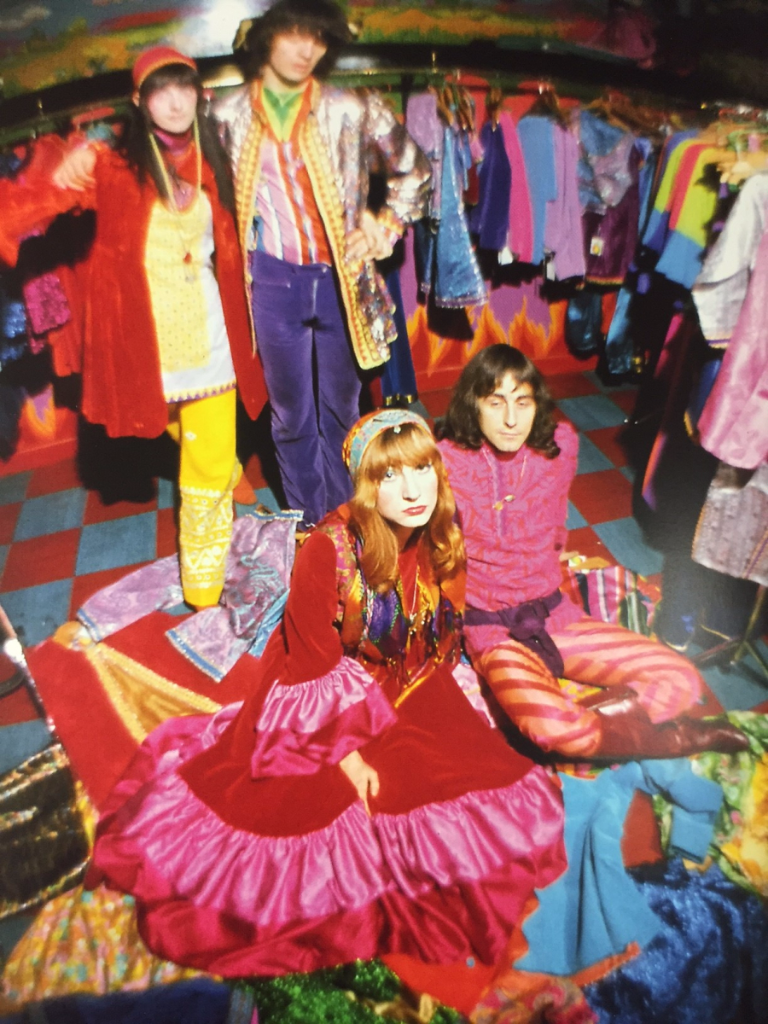
As George Harrison put it, “The Apple Boutique started as an excellent idea…what we were trying to do was to sell all the stuff that we liked.”[6] John Lennon wanted it to be “cheap, but good quality.”[7] In addition to clothes, they sold books, jewelry, music, spiritual objects, instruments, paintings, and furniture – “a Garden of Eden for lovers of hip clothes and all the trappings of a beautiful life.”[8] The Beatles selected Amsterdam artistic collective The Fool to design the clothing and shop interiors. They had previously worked with the four Dutch designers on a televised “All You Need is Love” performance and The Beatles Magical Mystery Tour film.[9] The Fool embraced ethnic and multi-cultural inspiration in their design, travelling to Morocco to source fabric and jewelry prior to the boutique’s opening.[10] The collective’s most extraordinary contribution was the giant psychedelic mural designed by Fool member Marijke Koger on the wall of 94 Baker Street, home of the boutique and Apple Corps headquarters.

Apple Boutique opened on December 5, 1967 with a raucous party. A glimpse of the FIDM Museum’s tapestry suit can be spotted among the opening night crowd; it was also once displayed in the boutique’s window, and later George Harrison wore a version of the design for a night out with John Lennon. The suit was certainly worn with the intention of being noticed, with its extreme flared sleeves and bell bottoms, beautiful woven fabric, fitted tailoring, and bright red silk lining (not to mention a visible red zipper at the front of the trousers).
Despite the overwhelming popularity of The Beatles, Apple Boutique was not an immediate success. Though the band claimed the store turned a profit, it struggled with shoplifting – and in the anti-capitalism atmosphere, it would have been very unhip to reprimand the culprits.[11] Prices were also a problem. As Lennon stated, the original goal was to provide affordable clothing, but The Fool’s designs were increasingly expensive to produce; even the Apple label was made of silk. A changing wind in aesthetics could also have contributed to its collapse. As Women’s Wear Daily reported, “The Beatles had barely opened the doors of Apple…before the prophets were crying doom to the Indian and Eastern exotic styles they sell there.”[12] The last straw came when the building’s freeholders demanded they paint over the eccentric mural on the side of the building. George Harrison reported, “Once we were told we had to get rid of the painting, the whole thing started to lose its appeal. The whole tone of the events around the Apple shop was going sour.”[13]

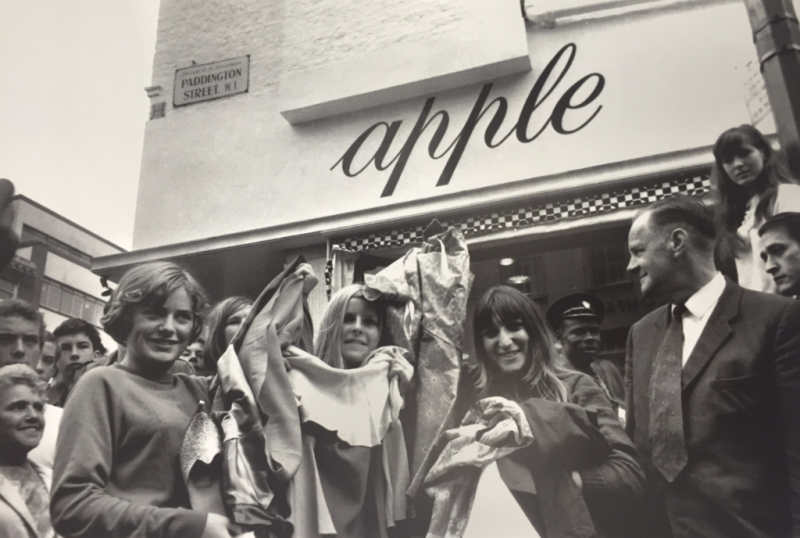
The Beatles’ hope for a unique cultural center was “in danger of becoming an ordinary chain store,”[14] and so the band made the decision to close the boutique just seven months after its opening. In a press release, Paul McCartney stated, “our main business is entertainment, communication. Apple is mainly concerned with fun, not frocks,”[15] reiterating that the four Beatles simply lost interest in being shop owners. In keeping with their anti-capitalist stance, Yoko Ono proposed that the boutique give everything away to its customers on its last day – and the band agreed.[16] On July 31, 1968, a massive crowd formed outside of Apple Boutique for the free-for-all (the one-item limit was widely ignored). Their loss was reported at numbers ranging from 10,000 to 50,000 pounds.
Meanwhile, The Beatles other clothing venture, Apple Tailoring, had opened on May 1968 under the partnership of Australian designer John Crittle. Apple Tailoring was a more traditional suiting shop, small and expensive with an older, affluent target customer.[17] However, it too struggled to find an audience, so The Beatles eventually sold their stakes to Crittle in 1968 and removed themselves from the clothing industry altogether.
The Beatles' fashion choices reflect the rapid style changes their generation underwent in the 1960s as they embraced leather jackets, tailored mod-suits, caftans by The Fool, and suits by Tommy Nutter in swift succession. Their brief foray into the clothing business demonstrates the importance of London's boutiques in leading the Swinging Sixties and the Peacock Revolution.
[1] Paolo Hewitt, Fab Gear: The Beatles and Fashion (Munich: Prestel, 2011) 39.
[2] Ibid, 57.
[3] Geoffrey Aquilina Ross, The Day of the Peacock (London: V&A Publishing, 2011) 87.
[4] Ibid., 72.
[5] William Jones, “Beatles’ Financial Woes,” The Washington Post, April 20, 1969.
[6] George Harrison, quoted in The Beatles Anthology (San Francisco: Chronicle Books, 2000) 270.
[7] John Lennon, quoted in The Beatles Anthology, 270.
[8] “Beatles Back London Pop Fashion Boutique,” Los Angeles Times, December 13, 1967.
[9] Hewitt, Fab Gear, 127.
[10] Ann Ryan, “The Fool’s Apple,” Women’s Wear Daily, November 2, 1967.
[11] Hewitt, Fab Gear, 203.
[12] Jo-An Jenkins, “The Beatles…Nowhere Men,” Women’s Wear Daily, February 5, 1969.
[13] George Harrison, quoted in The Beatles Anthology, 296.
[14] Paul McCartney, quoted in “Beatles’ First Shop Has Its Swan Song,” The New York Times, July 31, 1968.
[15] Paul McCartney, quoted in Kenneth Womack’s The Beatles Encyclopedia: Everything Fab Four (Santa Barbara: ABC-CLIO, LLC., 2017) 24.
[16] John Lennon, quoted in John C. Winn’s That Magic Feeling: The Beatles’ Recorded Legacy, Volume Two: 1966-1970 (New York: Three Rivers Press, 2009).
[17] Hewitt, Fab Gear, 214.


